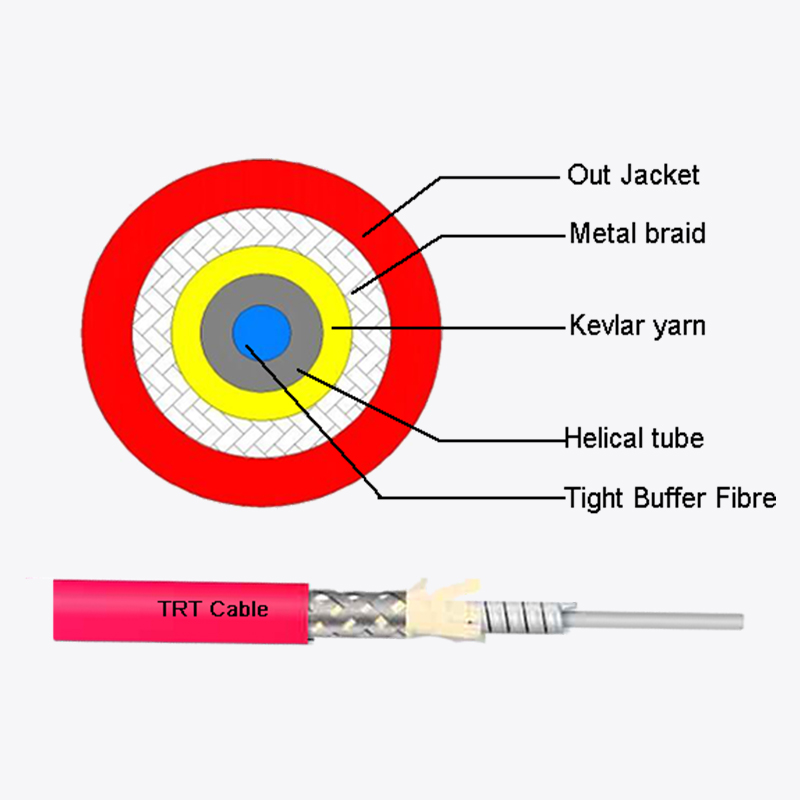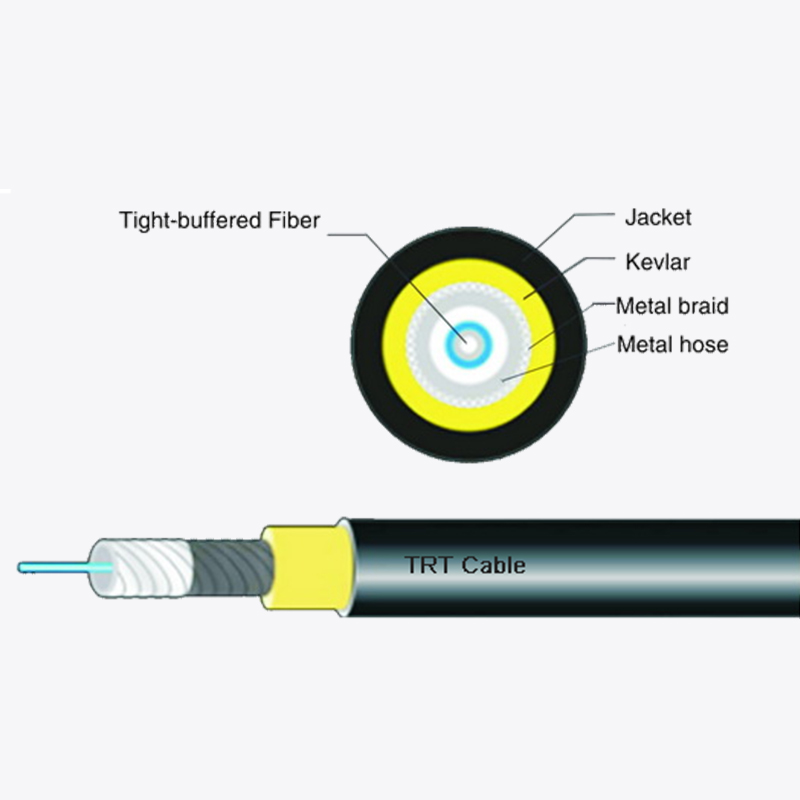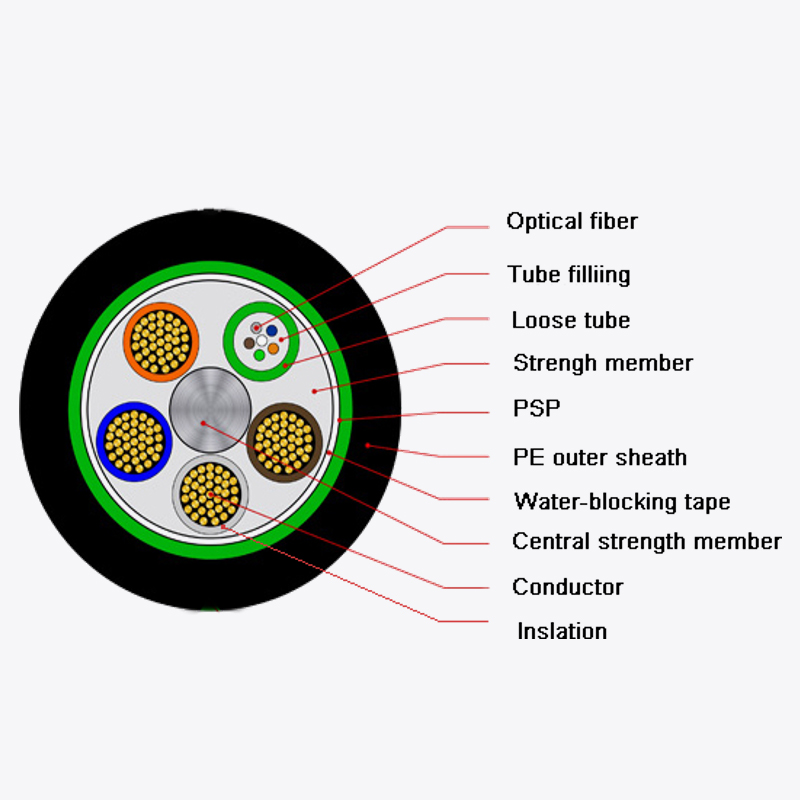Web Menu
Product Search
Exit Menu
What are the typical applications for self-supporting round fiber optic cable?

What are the typical applications for self-supporting round fiber optic cable?
The self-supporting round fiber optic cable is a specialized type of optical cable designed for aerial deployment without requiring a separate messenger wire. Its robust construction and integrated strength members make it suitable for various demanding environments.
Overview of self-supporting round fiber optic cable
The self-supporting round fiber optic cable, also known as figure-8 cable due to its distinctive shape, combines optical fibers with a built-in tensile strength member. This design allows it to be suspended between poles or towers without additional support, reducing installation complexity and cost. The cable is engineered to withstand environmental stresses such as wind, ice, and temperature fluctuations, making it a reliable choice for outdoor use.
Key applications in telecommunications
One of the primary uses of self-supporting round fiber optic cable is in long-distance telecommunications networks. Its ability to span large distances without intermediate support structures makes it ideal for rural and suburban deployments where underground cabling is impractical. Telecommunication providers often use this cable type to expand broadband access to underserved areas, ensuring high-speed data transmission over extended routes.
Another significant application is in fiber-to-the-home (FTTH) networks. The self-supporting design simplifies aerial installations in residential areas, where poles are already in place for electrical and telephone lines. By leveraging existing infrastructure, service providers can reduce deployment time and costs while delivering high-bandwidth connectivity to end-users.
Use in power utility communications
Power utilities frequently employ self-supporting round fiber optic cable for optical ground wire (OPGW) and all-dielectric self-supporting (ADSS) installations. In OPGW setups, the cable is integrated into the ground wire of high-voltage transmission lines, providing both electrical grounding and data transmission capabilities. ADSS variants, on the other hand, are used in environments where electrical interference is a concern, such as near power lines or in substations. These applications highlight the cable’s versatility in critical infrastructure projects.
Deployment in harsh and remote environments
The durability of self-supporting round fiber optic cable makes it well-suited for harsh environments, including mountainous regions, coastal areas, and deserts. Its resistance to UV radiation, moisture, and extreme temperatures ensures long-term reliability in challenging conditions. Additionally, the cable’s lightweight yet sturdy construction allows for efficient deployment in remote locations where heavy machinery access may be limited.
Applications in surveillance and security systems
Security and surveillance networks also benefit from the use of self-supporting round fiber optic cable. Its high bandwidth and low latency make it an excellent choice for transmitting high-definition video feeds from remote cameras and monitoring systems. Government agencies, transportation authorities, and private enterprises use this cable to establish secure and resilient communication links for critical surveillance operations.
Comparison with other aerial fiber optic cables
While there are other types of aerial fiber optic cables, the self-supporting round variant offers distinct advantages. Unlike lashed cables, which require a separate messenger wire, or loose tube cables, which may need additional support, the self-supporting design integrates strength and functionality. The table below summarizes key differences:
| Feature | Self-supporting round cable | Traditional lashed cable | ADSS cable |
|---|---|---|---|
| Integrated strength member | Yes | No | Yes |
| Installation complexity | Low | Moderate | Low |
| Susceptibility to sagging | Minimal | Possible | Minimal |
| Ideal for long spans | Yes | No | Yes |
Future trends and evolving applications
As demand for high-speed connectivity grows, the applications of self-supporting round fiber optic cable are expected to expand. Emerging uses include smart city infrastructure, 5G backhaul networks, and industrial IoT deployments. The cable’s ability to support high data rates over long distances positions it as a critical component in next-generation communication systems.
The self-supporting round fiber optic cable is a versatile and reliable solution for various high-performance applications. From telecommunications and power utilities to surveillance and smart infrastructure, its unique design ensures efficient and durable deployments. As technology advances, this cable type will continue to play a vital role in enabling seamless connectivity across diverse environments.
 Address:Zhong'an Road, Puzhuang Town, Suzhou City, Jiangsu Prov., China
Address:Zhong'an Road, Puzhuang Town, Suzhou City, Jiangsu Prov., China Phone:+86-189 1350 1815
Phone:+86-189 1350 1815 Tel:+86-512-66392923
Tel:+86-512-66392923 Fax:+86-512-66383830
Fax:+86-512-66383830 Email:[email protected]
Email:[email protected] Wechat: xiaobin18913501815
Wechat: xiaobin18913501815 whatsapp: +86 18913501815
whatsapp: +86 18913501815
 0
0

 English
English русский
русский Español
Español Português
Português عربى
عربى



